WIRE ROPE GLOSSARY OF COMMON TERMS AND DEFINITIONS
A
| Abrasion | Frictional surface wear on the wires of a wire rope. |
| Acceleration Stress | The additional stress that is imposed on a wire rope as a result of an increase in the load velocity. |
| Aggregate Strength | The strength derived by totaling the individual breaking strengths of the elements of the strand or rope. This strength does not recognize the reduction in strength resulting from the angularity of the elements in the rope, or other factors that may affect efficiency. |
| Aircraft Cables | Strands, cords and wire ropes made of special-strength wire, designed primarily for use in various aircraft industry applications. |
| Alternate Lay | Lay of a wire rope in which the strands are alternately regular and Lang Lay. |
| Area, Metallic | Sum of the cross-sectional areas of all the wires either in a wire rope or in a strand. |
| Armored Rope | Rope with individual strands spirally wrapped with flat steel wire. |
B
| Bail |
A.) U-shaped member of a bucket, or B.) U-shaped portion of a socket or other fitting used on wire rope. |
| Basket of Socket | The conical portion of a socket into which a broomed-rope-end is inserted and then secured. |
| Becket | An end attachment to facilitate wire rope installation. |
| Becket Loop | A loop of small rope or strand fastened to the end of a larger wire rope. Its function is to facilitate wire rope installation. |
| Bending Stress | Stress that is imposed on the wires of a strand or rope by a bending or curving action. |
| Birdcage | A colloquialism descriptive of the appearance of a wire rope forced into compression. The outer strands form a cage and, at times, displace the core. |
| Block | A term applied to a wire rope sheave (pulley) enclosed in side plates and fitted with some attachment such as a hook or shackle. |
| Boom Hoist Line | Wire rope that operates the boom hoist system of derricks, cranes, draglines, shovels, etc. |
| Boom Pendants | A non-operating rope or strand with end termination to support the boom. |
| Breaking Strength | Breaking Strength is the ultimate load at which a tensile failure occurs in the sample of wire rope being tested. (Note: The term breaking strength is synonymous with actual strength.) Minimum Acceptance Strength is that strength which is 2-1/2% lower than the catalog or nominal strength. This tolerance is used to offset variables that occur during a sample preparation and actual physical test of a wire rope. Nominal Strength is the published (catalog) strength calculated by a standard procedure that is accepted by the wire rope industry. The wire rope manufacturer designs wire rope to this strength, and the user should consider this strength when making design calculations. |
| Bridge Cable | (Structural Rope or Strand) The all-metallic wire rope or strand used as the catenary and suspenders on a suspension bridge. |
| Bridge Socket |
A wire rope or strand end termination made of forged or cast steel that is designed with baskets-having adjustable bolts-for securing rope ends. There are two styles:
|
| Bridal Sling | A two-part wire rope sling attached to a single-part line. The legs of the sling are spread to divide and equalize the load. |
| Bright Rope | Wire rope fabricated from wires that are not coated. |
| Bronze Rope | Wire rope made of bronze wires. |
| Button Convetor Rope | Wire ropes to which buttons or discs are attached at regular intervals to move material in a trough. |
C
| Cable | A term loosely applied to wire rope, wire strand and electrical conductors. |
| Cable-Laid Wire Rope | A type of wire rope consisting of several wire ropes laid into a single wire rope (e.g., 6x42 (6x6x7) tiller rope). |
| Cable Tool Drilling Line | The wire rope used to operate the cutting tools in the cable tool drilling method (i.e., rope drilling). |
| Center | The axial member of a strand about which the wires are laid. |
| Choker Rope | A short wire rope sling that forms a slip noose around an object that is to be moved or lifted. |
| Classification | Group, or family designation based on wire rope constructions with common strengths and weights listed under the broad designation. |
| Clevis | A “U” shaped fitting with a pin. |
| Clip | Fitting for clamping two parts of wire rope to each other. |
| Closed Socket | A wire rope end termination consisting of basket and bail made integral. |
| Closer | A machine that lays strands around a core to form rope. |
| Closing Line |
Wire rope that performs two functions:
|
| Coil | Circular bundle or package of wire rope that is not affixed to a reel. |
| Come-Along | Device for making a temporary grip on a wire rope. |
| Common Strand | Galvanized strand made of galvanized iron wire whose grade is common iron. |
| Conical Drum | Grooved hoisting drum of tapering diameter. |
| Construction | Geometric design description of the wire rope's cross section. This includes the number of STRANDS, the number of WIRES per strand and the pattern of wire arrangement in each STRAND. |
| Constructional Stretch | The stretch that occurs when the rope is loaded-it is due to the helically laid wires and strands creating a constricting action that compresses the core and generally brings all of the rope's elements into close contact. |
| Continuous Bend | Reeving of wire rope over sheaves and drums so that it bends in the same direction, as opposed to reverse bend. |
| Cord | Term applied to small sizes of wire ropes. |
| Core | The axial member of a wire rope about which the strands are laid. |
| Coring Line | Wire rope used to operate the coring tool for taking core samples during the drilling of a well. |
| Corrosion | Chemical decomposition of the wires in a rope through the action of moisture, acids, alkalines or other destructive agents. |
| Corrosion-Resisting Steel | Chrome-nickel steel alloys designed for increased resistance to corrosion. |
| Corrugated | Term used to describe the grooves of a SHEAVE or DRUM after these have been worn down to a point where they show an impression of a wire rope. |
| Creep | The unique movement of a wire rope with respect to a drum surface or sheave surface resulting from the asymmetrical load between one side of the sheave (drum) and the other. It is not dissimilar to the action of a caterpillar moving over a flat surface. It should be distinguished from slip which is yet another type of relative movement between rope and the sheave or drum surface. |
| Critical Diameter | Diameter of the smallest bend for a given wire rope which permits the wires and strands to adjust themselves by relative movement while remaining in their normal position. |
| Crowd Rope | A wire rope used to drive or force a power shovel bucket into the material that is to be handled. |
| Cylindrical Drum | Hoisting drum of uniform diameter. |
D
| Dead-Line | In drilling, it is the end of the rotary drilling line fastened to the anchor or dead-line clamp. |
| Deceleration Stress | The additional stress that is imposed on a wire rope as a result of a decrease in the load velocity. |
| Design Factor | In a wire rope, it is the ratio of the nominal strength to the total working load. |
| Diameter | A line segment which passes through the center of a circle and whose end points lie on the circle. As related to wire rope it would be the diameter of a circle which circumscribes the wire rope. |
| Dog-Leg | Permanent bend or kink in a wire rope, caused by improper use or handling. |
| Dragline |
A.) Wire rope used for pulling excavating or drag buckets. B.) Name applied to a specific type of excavator. |
| Drum | A cylindrical flanged barrel, either of uniform or tapering diameter, on which rope is wound either for operation or storage; its surface may be smooth or grooved. |
E
| Efficiency | Ratio of a wire rope's actual breaking strength and the aggregate strength of all individual wires tested separately-usually expressed as a percentage. |
| Elastic Limit | Stress limit above which permanent deformation will take place within the material. |
| End-Preperation | The treatment of the end of a length of wire rope designed primarily as an aid for pulling the rope through a reeving system or tight drum opening. Unlike END TERMINATIONS, these are not designed for use as a method for making a permanent connection. |
| End-Termination | The treatment at the end or ends of a length of wire rope, usually made by forming an eye or attaching a fitting and designed to be the permanent end termination on the wire rope that connects it to the load. |
| Endless Rope | Rope with ends spliced together to form a single continuous loop. |
| Equalizing Sheave | The sheave at the center of a rope system over which no rope movement occurs other than equalizing movement. It is frequently overlooked during crane inspections, with disastrous consequences. It can be a source of severe degradation. |
| Equalizing Thimble | Special type of fitting used as a component part of some wire rope slings. |
| Extra Improved Plow, Steel Rope | A specific wire rope grade. |
| Extra High Strength Strand | A grade of galvanized or bright strand. |
| Eye or Eye Splice | A loop, with or without a thimble, formed at the end of a wire rope. |
F
| Factor of Safety | In the wire rope industry, this term was originally used to express the ratio of nominal strength to the total working load. The term is no longer used since it implies a permanent existence for this ratio when, in actuality, the rope strength begins to reduce the moment it is placed in service. See DESIGN FACTOR. |
| Fatigue | As applied to wire rope, the term usually refers to the process of progressive fracture resulting from the bending of individual wires. These fractures may and usually do occur at bending stresses well below the ultimate strength of the material; it is not an abnormality although it may be accelerated due to conditions in the rope such as rust or lack of lubrication. |
| Fiber Center | Cord or rope of vegetable or synthetic fiber used as the axial member of a strand. |
| Fiber Core | Cord or rope of vegetable or synthetic fiber used as the axial member of a rope. |
| Filler Wire | Small spacer wires within a strand which help position and support other wires. Also the name for the type of strand pattern utilizing filler wires. |
| Fitting | Any functional accessory attached to a wire rope. |
| Flat Rope | Wire rope that is made of a series of parallel, alternating right-lay and left-lay ropes, sewn together with relatively soft wires. |
| Flattened Strand Rope | Wire rope that is made either of oval or triangular shaped strands in order to form a flattened rope surface. |
| Fleet Angle | That angle between the rope's position at the extreme end wrap on a drum, and a line drawn perpendicular to the axis of the drum through the center of the nearest fixed sheave. See DRUM and SHEAVE. |
G
| Galvanized | Zinc coating for corrosion resistance. |
| Galvanized Rope | Rope made of galvanized wire. |
| Galvanized Strand | Strand made of galvanized wire. |
| Galvanized Wire | Wire coated with zinc. |
| Grade | Wire rope or strand classification by strength and/or type of material, i.e., Improved Plow Steel, Type 302 Stainless, Phosphor Bronze, etc. It does not imply a strength of the basic wire used to meet the rope's nominal strength. |
| Grades, Rope | Classification of wire rope by the wire's metallic composition and the rope's nominal strength. |
| Grommet | An endless circle or ring fabricated from one continuous length of strand or rope. |
| Grooved Drum | Drum with a grooved surface that accommodates the rope &/or wire rope and guides it for proper winding. |
| Grooves | Depressions-helical or parallel-in the surface of a sheave or drum that are shaped to position and support the rope. |
| Guard Rail Cable | A galvanizad wire rope or strand erected along a highway. |
| Guy Line | Strand or rope, usually galvanized, for stabilizing or maintaining a structure in fixed position. |
H
| Haulage Rope | Wire Rope used for pulling movable devices such as cars that roll on a track. |
| Hawser | Wire rope, usually galvanized, used for towing or mooring marine vessels. |
| High Strength Strand | Grade of galvanized or bright strand. |
| Holding Line | Wire rope on a clamshell or orange peel bucket that suspends the bucket while the closing line is released to dump its load. |
I
| Idler | Sheave or roller used to guide or support a rope. |
| Improved Plow Steel Rope | A specific grade of wire rope. |
| Independent Wire Rope Core (IWRC) | A wire rope used as the axial member of a larger wire rope. |
| Inner Wires | All wires of a strand except the outer or cover wires. |
| Internally Lubricated | Wire rope or strand having all of its wire components coated with lubricants. |
| Iron Rope | A specific grade of wire rope. |
| IWRC | Independent Wire Rope Core. |
K
| Kink | A unique deformation of a wire rope caused by a loop of rope being pulled down tight. It represents irreparable damage to and an indeterminate loss of strength in the rope. |
L
| Lagging |
A.) External wood covering on a reel to protect the wire rope or strand. B.) The grooved shell of a drum. |
| Lay |
A.)The manner in which the wires in a strand or the strands in a rope are helically laid, or B.) the distance measured parallel to the axis of the rope (or strand) in which a strand (or wire) makes one complete helical convolution about the core (or center). In this connection, lay is also referred to as LAY LENGTH or PITCH. Lay Types
|
| Lead Line | That part of a rope tackle leading from the first, or fast, sheave to the drum. |
| Line | Synonymous term for WIRE ROPE. |
| Locked Coil Strand | Smooth-surfaced strand ordinarily constructed of shaped, outer wires arranged in concentric layers around a center of round wires. |
| Loop | A 360° change of direction in the course of a wire rope which when pulled down tight will result in a kink. |
M
| Marline Spike | Tapered steel pin used in splicing wire rope. |
| Martensite | A brittle micro-constituent of steel formed when the steel is heated above its critical temperature and rapidly quenched. This occurs in wire rope as a result of frictional heating and the mass cooling effect of the cold metal beneath. Martensite cracks very easily, and such cracks can propagate from the surface through the entire wire. |
| Mild Plow Steel Rope | A specific grade of wire rope. |
| Milking | Sometimes called IRONING, it is the progressive movement of strands along the axis of the rope, resulting from the rope's movement through a restricted passage such as a tight sheave. |
| Modulus of Elasticity | Mathematical quantity expressing the ratio, within the elastic limit, between a definite range of unit stress on a wire rope and the corresponding unit elongation. |
| Mooring Lines | Galvanized wire rope, usually 6x12, 6x24, or 6x37 class for holding ships to dock. |
N
| Non-Performed | Rope or strand that is not preformed. See PREFORMED STRANDS and PREFORMED ROPE. |
| Non-Rotating Wire Rope | Term, now abandoned, referring to 19x7 or 18x7 rope. |
| Non-Spinning Wire Rope | See ROTATION RESISTANT ROPE. |
O
| Open Socket | A wire rope fitting that consists of a basket and two ears with a pin. See FITTING. |
| Outer Wires | Outer layer of wires. |
P
| Peening | Permanent distortion resulting from cold plastic metal deformation of the outer wires. Usually caused by pounding against a sheave or machine member, or by heavy operating pressure between rope and sheave, rope and drum, or rope and adjacent wrap of rope. |
| Plow Steel Rope | A specific grade of wire rope. |
| Preece Test | A recognized standard of testing the galvanized coating on a wire. |
| Performance Strands | Strand in which the wires are permanently formed during fabrication into the helical shape they will assume in the strand. |
| Performed Wire Rope | Wire rope in which the strands are permanently formed during fabrication into the helical shape they will assume in the wire rope. |
| Prestressing | An incorrect reference to PRESTRETCHING. |
| Prestretching | Subjecting a wire rope or strand to tension prior to its intended application, for an extent and over a period of time sufficient to remove most of the CONSTRUCTIONAL STRETCH. |
| Proportional Limit | As used in the rope industry, this term has virtually the same meaning as ELASTIC LIMIT. It is the end of the load versus elongation relationship at which an increase in load no longer produces a proportional increase in elongation and from which point recovery to the rope's original length is unlikely. |
R
| Rated Capacity | The load which a new wire rope or wire rope sling may handle under given operating conditions and at an assumed DESIGN FACTOR. |
| Reel | A flanged spool on which wire rope or strand is wound for storage or shipment. |
| Reeve | To pass a rope through a hole or around a system of sheaves. |
| Reserve Strength | The strength of a rope exclusive of the outer wires. |
| Reverse Bend | Reeving a wire rope over sheaves and drums so that it bends in opposing directions. |
| Rollers | Relatively small-diameter cylinders, or wide-faced sheaves, that serve as support for ropes. |
| Rotary Line | On a rotary drilling rig, it is the wire rope used for raising and lowering the drill pipe, as well as for controlling its position. |
| Rotation-Resistant Rope | A wire rope consisting of an inner layer of strand laid in one direction covered by a layer of strand laid in the opposite direction. This has the effect of counteracting torque by reducing the tendency of finished rope to rotate. |
| Round-Wire Track Strand | Strand composed of concentric layers of round WIRES, used as TRACK CABLE. |
S
| Safety Factor | See DESIGN FACTOR. |
| Safe Working Load | This term is potentially misleading and is, therefore, in disfavor. Essentially, it refers to that portion of the nominal rope strength that can be applied either to move or sustain a load. It is misleading because it is only valid when the rope is new and equipment is in good condition. See RATED CAPACITY. |
| Sand Line | In well drilling, it is the wire rope that operates the bailer that removes water and drill cuttings. |
| Seale | The name for a type of strand pattern that has two adjacent layers laid in one operation with any number of uniform sized wires in the outer layer, and with the same number of uniform but smaller sized wires in the inner layer. |
| Seize | To make a secure binding at the end of a wire rope or strand with SEIZING WIRE or SEIZING STRAND. |
| Seizing Strand | Small strand usually of 7 wires made of soft annealed wire. |
| Seizing Wire | Soft annealed wire. |
| Serve | To cover the surface of a wire rope or strand with a fiber cord or wire wrapping. |
| Shackle | A “U” or anchor-shaped fitting with pin. |
| Sheave | A grooved pulley for wire rope. |
| Sling, Wire Rope | An assembly fabricated from WIRE ROPE which connects the load to the lifting device. |
| Sling, Braided | A flexible sling, the body of which is made up of two or more WIRE ROPES braided together. See SLINGS. |
| Smooth-Faced Drum | Drum with a plain, ungrooved surface. See DRUM. |
| Socket | Generic name for a type of wire rope fitting. |
| Spin Resistant | An abandoned term referring to a ROTATION-RESISTANT rope of the 8 x 19 classification. |
| Spiral Groove | A continuous helical groove that follows a path on and around a drum face, similar to a screw thread. See DRUM. |
| Splicing |
|
| Stainless Steel Rope | Wire rope made up of corrosion resistant steel wires. |
| Steel Clad Rope | Rope with individual strands spirally wrapped with flat steel wire. |
| Stone Sawing Strand | A plurality of round or shaped wires helically laid about an axis. |
| Strand | Usually a 3-wire strand used in quarrying stone or slate. |
| Strander | A machine that lays wires together helically to form a strand. |
| Stress | The force or resistance within any solid body against alteration of form; in the case of a solid wire it would be the load on the rope divided by the cross-section area of the wire. |
| Stretch | The elongation of a wire rope under load. |
| Swaged Fitting | Fitting into which wire rope can be inserted and then permanently attached by cold pressing (swaging) the shank that encloses the rope. |
T
| Tag Line | A small wire rope used to prevent rotation of a load. |
| Tapering & Welding | Reducing the diameter of the end of a wire rope and welding it to facilitate reeving. |
| Thimble | Grooved metal fitting to protect the eye, or fastening loop of a wire rope. |
| Tiller Rope Cable | A very flexible operating rope, commonly made by laying six 6x7 ropes around a fiber core resulting in a 6x42 construction. As well as, a 3/32 inch 7x7 galvanized cable coated to an outside diameter of 3/16 inch with vinyl or nylon. |
| Tinned Wire | Wire coated with tin. |
| Track Cable | On an aerial system it is the suspended wire rope or strand along which the carriers move. |
| Traction Rope | On an aerial conveyor or haulage system it is the wire rope that propels the carriages. |
| Traction Steel Rope | A specific grade of wire rope. |
| Tramway | An aerial conveying system for transporting multiple loads. |
| Turn | Synonymous with the term WRAP; it signifies a single wrap around a drum. |
| Turnbuckle | Device attached to wire rope for making limited adjustments in length. It consists of a barrel and right and left hand thread bolts. |
W
| Warrington | The name for a type of strand pattern that is characterized by having one of its wire layers (usually the outer) made up of an arrangement of alternately large and small wires. |
| Wedge Socket | Wire rope fittings wherein the rope end is secured by a wedge. |
| Wire (Round) | A single, continuous length of metal, with a circular cross-section that is cold-drawn from rod. |
| Wire Rope | A plurality of wire strands helically laid about an axis. |
| Wire Strand Core (WSC) | A wire strand used as the axial member of a wire rope. |





































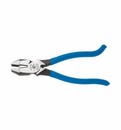 Klein® D2000-9ST 2000 Heavy Duty Rebar Work Cutting Plier, 9-3/8 in OAL
Klein® D2000-9ST 2000 Heavy Duty Rebar Work Cutting Plier, 9-3/8 in OAL
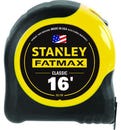 Stanley® FatMax® 33-716 Reinforced Tape Rule with BladeArmor®, 16 ft L x 1-1/4 in W Blade, Mylar® Polyester Film Blade
Stanley® FatMax® 33-716 Reinforced Tape Rule with BladeArmor®, 16 ft L x 1-1/4 in W Blade, Mylar® Polyester Film Blade
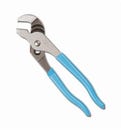 Channellock® 426 Tongue and Groove Plier, 7/8 in Nominal, 3/4 in L C1080 High Carbon Steel Straight Jaw, 6-1/2 in OAL
Channellock® 426 Tongue and Groove Plier, 7/8 in Nominal, 3/4 in L C1080 High Carbon Steel Straight Jaw, 6-1/2 in OAL
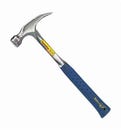 Estwing® E324S Framing Hammer, 16 in OAL, Smooth Surface, 24 oz Steel Head, Straight Claw, Steel Handle
Estwing® E324S Framing Hammer, 16 in OAL, Smooth Surface, 24 oz Steel Head, Straight Claw, Steel Handle
 Mayhew™ 62065 X-Long Pin Punch Kit, Hex Shank, 9-1/2 in OAL, 5 Pcs
Mayhew™ 62065 X-Long Pin Punch Kit, Hex Shank, 9-1/2 in OAL, 5 Pcs
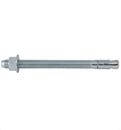 DeWALT® Power-Stud®+ Powers® 7449SD1-PWR Expansion Wedge Anchor, 3/4 in dia, 10 in OAL, 7-1/2 in L Thread, Carbon Steel, Zinc Plated
DeWALT® Power-Stud®+ Powers® 7449SD1-PWR Expansion Wedge Anchor, 3/4 in dia, 10 in OAL, 7-1/2 in L Thread, Carbon Steel, Zinc Plated
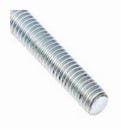 BBI® 777037 All Threaded Rod, 3/8-16, 12 ft OAL, Steel Alloy
BBI® 777037 All Threaded Rod, 3/8-16, 12 ft OAL, Steel Alloy
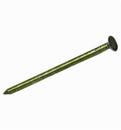 Primesource® 8CTDSKR Sinker Nail, 17/64 in, 2-3/8 in L, 9 ga, Vinyl Coated, Smooth Shank
Primesource® 8CTDSKR Sinker Nail, 17/64 in, 2-3/8 in L, 9 ga, Vinyl Coated, Smooth Shank
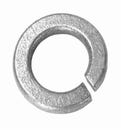 BBI® 754072 Medium Split Lock Washer, 1/2 in Nominal, 18-8 SS
BBI® 754072 Medium Split Lock Washer, 1/2 in Nominal, 18-8 SS
